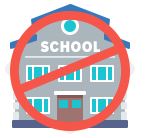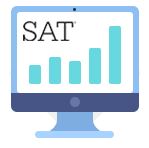
Education is one of the most divisive and hottest topics right now in the United States, including here in Florida.
When making a decision on where to live with a growing family, education is at the top of the checklist for most families. While athletics and social opportunities are of importance, academics should obviously be top of mind.
The folks over at US News put together a list of the top ranked high schools across the United States for the 2023-24 school year. They reviewed nearly 25,000 public high schools nationwide, across six metrics.
Florida Public High Schools
In the state of Florida there are 4,202 schools in 69 school districts. There are 2,227 high schools in Florida, made up of 1,485 public schools and 742 private schools. According to the rankings, high schoolers in Florida public schools are assessed on science and social studies and must take the SAT college entrance exam.
Methodology
In addition to traditional high schools, the rankings encompass charter; magnet; and science, technology, engineering and math-focused schools. There are six points of focus in the US News rankings.
- College Readiness
- College Curriculum Breadth
- State Assessment Proficiency
- State Assessment Performance
- Underserved Student Performance
- Graduation Rate
You can read more about how the rankings are determined here.
The Top 10 Ranked High Schools In Florida
- School for Advanced Studies - Miami-Dade - #3 National Rankings
- Pine View School - Sarasota County - #13
- Archimedean Upper Conservatory Charter School - Miami-Dade - #41
- Westshore Junior/Senior High School - Brevard - #43
- Marine Academy of Science and Technology - Miami-Dade - #46
- Suncoast Community High School - Palm Beach County - #70
- Edgewood Jr/Sr High School - Brevard - #74
- Stanton College Preparatory School - Duval - #76
- Design and Architecture Senior High School - Miami-Dade - #86
- Jose Marti Mast 6-12 Academy - Miami-Dade - #87
For the complete list of all ranked Florida public high schools, click here.
New Report Shows Florida Has the 9th Best School System in America
The Florida school system have been in the news a lot lately. Even though much that is said is negative, it turns out, our schools actually grade fairly well. When you look past the headlines and dig into the data, it seems things aren't bad at all. In fact, this new report from Wallethub shows that Florida has the 9th best school system in America.
In order to determine the best school systems in America, WalletHub compared the 50 states and the District of Columbia across 32 key measures of quality and safety. The data set ranges from pupil-teacher ratio and dropout rate to median standardized-test scores. We'll break down fully where the numbers come from in a bit, but here's the snapshot.
Quality & Safety of Schools in Florida (1=Best; 25=Avg.):
All very respectable numbers. Also, as you plan for Back To School, keep in mind that this is the Tax Free Week for school supplies in Florida. Prices have gone up on everything, so save where you can.
Now, unlike other research that focuses primarily on academic outcomes or school finance, WalletHub’s analysis takes a more comprehensive approach. It accounts for performance, funding, safety, class size and instructor credentials. To determine the top-performing school systems in America, WalletHub compared the 50 states and the District of Columbia across 32 key metrics.
Main Findings
Public School Ranking by State
Note: With the exception of “Total Score,” all of the columns in the table above depict the relative rank of that state, where a rank of 1 represents the best conditions for that metric category. To see all 51, see the full report here.
Dropout Rate
- 1. West Virginia
- 2. Iowa
- 3. Kentucky
- 4. New Jersey
- 5. Indiana

- 47. Oklahoma
- T-48. Alaska
- T-48. Arizona
- T-48. New Mexico
- T-48. District of Columbia
Math Test Scores
- 1. Massachusetts
- 2. Wyoming
- 3. Utah
- 4. Nebraska
- 5. Wisconsin

- 47. Oklahoma
- 48. Delaware
- 49. West Virginia
- 50. District of Columbia
- 51. New Mexico
Reading Test Scores
- 1. Massachusetts
- 2. New Jersey
- 3. Utah
- T-4. Colorado
- T-4. New Hampshire

- 47. Oklahoma
- 48. Alaska
- 49. District of Columbia
- 50. West Virginia
- 51. New Mexico
Median SAT Score
- 1. Wisconsin
- T-2. Kansas
- T-2. Utah
- T-2. Wyoming
- T-5. Minnesota
- T-5. Nebraska

- T-46. Delaware
- T-46. New Mexico
- T-46. Rhode Island
- 49. Oklahoma
- T-50. District of Columbia
- T-50. West Virginia
Median ACT Score
- 1. District of Columbia
- T-2. California
- T-2. Connecticut
- T-2. Massachusetts
- 5. New Hampshire

- T-44. Alabama
- T-44. Arizona
- T-44. Louisiana
- T-44. Mississippi
- T-44. North Carolina
- T-44. Oklahoma
- T-44. Tennessee
- 51. Nevada
Pupil-Teacher Ratio
- 1. Vermont
- 2. Maine
- 3. District of Columbia
- 4. New Hampshire
- 5. New Jersey

- 47. Alabama
- 48. Nevada
- 49. California
- 50. Arizona
- 51. Utah
% of Threatened/Injured High School Students
- 1. Delaware
- 2. California
- 3. North Carolina
- 4. Maine
- 5. Massachusetts

- T-40. Idaho
- T-40. Texas
- 42. Kansas
- 43. Alabama
- 44. Mississippi
- 45. Louisiana
Bullying Incidence Rate
- 1. District of Columbia
- 2. Delaware
- 3. Hawaii
- 4. Rhode Island
- 5. Virginia

- 44. Iowa
- 45. Wyoming
- 46. New Hampshire
- 47. West Virginia
- 48. Alaska
Methodology
In order to determine the best and worst states for public-school education, WalletHub compared the 50 states and the District of Columbia across two key dimensions, “Quality” and “Safety.”
We evaluated those dimensions using 32 relevant metrics, which are listed below with their corresponding weights. Each metric was graded on a 100-point scale, with a score of 100 representing the highest quality of public K–12 education.
Finally, we determined each state and the District’s weighted average across all metrics to calculate its overall score and used the resulting scores to rank-order our sample.
Quality – Total Points: 80
Safety – Total Points: 20
Sources: Data used to create this ranking were collected from the U.S. Census Bureau, U.S. Department of Education, National Conference of State Legislatures, National Center for Education Statistics, Centers for Disease Control and Prevention, Western Interstate Commission for Higher Education, Office of Juvenile Justice and Delinquency Prevention, Child and Adolescent Health Measurement Initiative, Education Commission of the States, U.S. News & World Report, College Board, Ballotpedia, ACT, State Educational Technology Directors Association, Civil Rights Data Collection and Zendrive.





